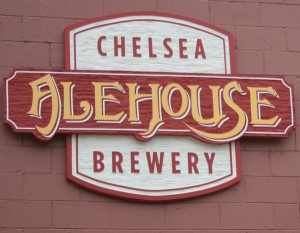
(Correction: In one sentence of this story, I inadvertently turned 2.4 mills into 4.2 mills. This information has been corrected and I sincerely apologize for the mistake.)
The Chelsea Area Fire Authority board voted 4-1 Tuesday, July 18, to place a 5-year, 2.4 mill millage on the Nov. 7 ballot to pay for fire services for residents of Chelsea, Lima, Lyndon and Sylvan townships – the towns within the CAFA member area.
If approved by voters, the additional $489,797 in revenues means the authority can hire three additional firefighters, can rebuild its dwindling cash reserves and can solidify a fund for capital replacements.
Currently, CAFA’s voter-approved, 9-year millage is 1.8 mills and expires on Dec. 31, 2018.
The vote followed an audit presentation by Pat Hanniford during which he gave CAFA’s books an “unqualified opinion,” the highest level of “assertions that auditors can give.”
However, he also cautioned the board that CAFA’s fund balance from 2010-2016 has trended downward, and that the audited amount in the authority’s $436,527 fund balance as of Dec. 31, 2016 was lower than it should be. (Currently, there is about $336,000 in reserves.)
The auditor recommended that CAFA have a cash balance of about $1 million.
To view the full audit report, please go to http://www.michigan.gov/treasury/0,1607,7-121-1751_31038—,00.html
Although he said he wished the vote could be unanimous, voting no was CAFA Chairman Kurt Koseck who said, “The 2.4 (mills), if we hire three firefighters, doesn’t solve the problem of reaching the $1 million in reserves.”
Koseck said he’s worked on a pro forma that shows staying at 1.8 mills means not hiring any new firefighters and between 7-10 years to reach the $1 million in reserves, moving to 2.1 mills means not hiring additional firefighters and reaching the $1 million mark in about 5 years and 2.4 mills means the addition of three firefighters and reaching the $1 million mark in about seven years.
“This doesn’t build the reserves very quickly,” he said referring to the 2.4 mills.
Board Member Craig Maier said he attended a meeting with Hanniford and the chief and at the time, he was told that remaining at 1.8 mills was not sustainable, and it wasn’t a sufficient amount to build up the reserve funds.
Maier said that personally, he was in favor of putting 2.4 mills on the ballot, to allow for having two-man teams – two-firefighters in and two firefighters out — at a fire for the safety of both the residents and the firefighters.
Board member Tom Osborne also said he was in favor of 2.4 mills saying he’d like to see more manpower as currently, if two firefighters are out on a call, there is only one left at a station.
“We’ve taken on the responsibility of a certain level of medical care and in Chelsea, for instance, with the number of senior citizens, the addition of one person per shift, there will be the level of service that people expect and hopefully, are willing to pay for.”
Board Member Peter Feeney focused his attention on the authority’s aging and expensive equipment that will need to be replaced.
He said that no matter what, 30 percent of the people will say “no” to a millage, but the board should ask for 2.4 mills and work toward the $1 million cash reserves.
Board Member Shauna Mote said, “It was no secret that Lyndon (Township) was talking about leaving CAFA,” but she and Tom Demske, an alternate member of the board, spent a lot of time talking to Lyndon Township Board members about the situation. She said she was told that the board wanted to build a new municipal building that included a small fire station with a bay for a truck and sleeping quarters for a firefighter.
She said a straw poll of the board found that 2.4 mills was the amount the Lyndon board favored as a CAFA millage request.
During the second public comment following the vote, former CAFA Chairman Rod Anderson said he was “skeptical” about the amount of the millage especially in light of Lyndon Township’s “reluctant participation” in CAFA. He said this was a 33-percent millage increase and he’d like more information about why it was necessary.
In a comment on Chelsea Update, Fire Chief Rob Arbini spelled out CAFA’s budget constraints during the last few years, which are the driving forces for the increased millage proposal.
He wrote: CAFA operated in the red in 2012 (-$155,813), 2013 (-$211,541), 2014 (-$67,835), and 2015 (-$248,338) and had to use fund balance to make up the deficit.
In 2016, CAFA operated in the black, per the audit, with a surplus of $100,730.28.
What the audit report doesn’t reflect, he wrote, is that CAFA was short personnel due to retirements and a layoff, which was a cost of approximately $70,000.
CAFA became a full-time authority in 2006. Over the years, CAFA has built up a compliment of 9 full-time firefighters that operate on a 24-hour shift coverage. I bring this up because CAFA had a compliment of 39 paid-on-call firefighters to support the full-time staff, he wrote.
As of 7-13-2017, CAFA has 2 paid-on-call personnel. When an alarm comes in, CAFA is struggling to have support personnel to respond. This is not just fire calls, it could be vehicle accidents on I-94 or a bicycle accident on the new DTE trails in Lyndon Township, where CAFA personnel recently spent two hours looking for a citizen who was hurt on the trails.
CAFA has three (3) personnel per shift. When a call comes in for a citizen in need (CPR, stroke, diabetic emergency, pedestrian hit by a vehicle, etc.), we respond with a minimum of two personnel, he wrote. That leaves one firefighter to respond to the next call if one were to happen in that same time frame.
To learn more about CAFA, go to https://www.chelseafire.org and to see the full meeting, go to https://www.youtube.com/user/ChelseaFire.















They say extreme claims require extreme evidence. Right now I don’t see the rationale for a 33% increase in base millage. Hopefully, the questions about what we are getting can be resolved before the vote. I have confidence that Chief Arbini and the millage committee will be able to address these issues as time goes forward.
As a matter of historical interest, information on the last millage can found on the website referenced nearby.